While not strictly aligned with brain health or mental wellbeing, I chose to write a blog this week, wearing my medical practitioner hat, about how we can best protect ourselves from the risk of COVID-19
If there’s one place that brings out the germophobe in me, it has to be public toilets. Specifically, the door to gain entry. There is often a metal plate easily recognisable by its greasy finger smeared imprints provided as the place to push the door open.
Not me. I will use my elbow, shoulder or foot to gain entry but not my hand. And at the risk of sharing too much information, I choose to squat not sit.
The nature of my work as a professional speaker and trainer means I come into contact with a lot of people and it’s hard to take time off if I get sick. To minimise the risk, if I come into contact with people who are clearly unwell, coughing, sniffling or blowing their noses into horrid overused paper hankies that are then stuffed moist and teeming with viruses and bacteria into pockets, jackets or handbags I will try to avoid shaking their hand or coming into too close contact and head for the nearest handwashing basin after leaving them.
Basic hygiene; washing our hands after using the toilet, before prepping or eating food or handling a pet was drummed into me from when I was knee-high to a grasshopper. It was reinforced during my nursing training and again in medical school especially when assisting in surgical procedures where the pre-operative surgical scrub and gowning up ritual using nail brushes, iodine skin wash and a meticulous no-touch technique is a performance akin to the Japanese tea ceremony. It has to be done correctly.
In theatre, everyone is on high alert for any potential breach. Touching a non-sterilised surface with a glove or a gown requires the entire ritual to be repeated – because of the risk of cross-infection. We need to be as attentive to our own hand hygiene.
In our daily lives, we touch multiple surfaces all day long, all teeming with bacteria and viruses, most of which are harmless. If we come into contact with a potential pathogen, the greatest risk is the transfer of the germ to our face by our own hand. We touch our faces a lot – have you noticed?
Death from infectious disease used to be the commonest cause of mortality until fairly recently, and it seems that in the face of the COVID-19 outbreak the single most effective strategy for reducing our potential risk of contracting or passing on this type of disease isn’t being shared loudly enough amidst all the commentary in the media about ensuring we stock up on toilet paper, non-perishable foodstuffs, face masks and hand sanitiser.
When a friend told me last week she was number thirty on the waiting list at her local chemist for hand sanitiser “because you can’t buy it anywhere for love nor money” and was somewhat fed up because her local supermarket had sold out of toilet paper, I thought, ‘OK let’s put a few things into perspective here’.
Hand sanitiser is useful but not essential. Handwashing with soap (whether anti-bacterial or not) is good. And let’s just say, stockpiling toilet paper isn’t terribly helpful. Having one extra packet of four rolls is plenty.
COVID-19 appears to be going pandemic and there’s conjecture around what percentage of the population may become infected, ranging from 25-70%, but of course, we don’t really know.
80% of those who become infected will develop mild disease with fever and cough or remain asymptomatic.
The mortality rate is currently estimated at around 3.4% and is higher in the elderly and those with existing co-morbidities.
Will someone please pass me that bar of soap?
It was over 173 years ago that a junior doctor working in one of two obstetrics units in a hospital in Vienna noticed that maternal death rates from puerperal fever (infection post-childbirth) was 16% on the doctor run ward compared to 7% on the ward run by midwives. He suspected the reason was because the doctors and medical students would commonly go to the delivery ward after performing autopsies and that the doctors were inadvertently infecting the women in labour. He recommended hand scrubbing in chlorinated lime solution before every patient contact and especially before leaving the autopsy room.
This led to a drop in the mortality rate to 3% in the most affected clinic.
We have a lot to be thankful for to Ignaz Philipp Semmelweiss, the Hungarian physician and scientist who is considered the father of hand hygiene.
Have you washed your hands?
Since Semmelweiss’s time, the biggest problem has been in remembering to undertake this simple precaution. We know but don’t always do.
Traditionally handwashing has been associated with reducing gastroenteric infection.
Diarrhoeal disease has long been a major killer of children in developing countries and remains the third leading cause of child mortality globally accounting for one in nine child deaths.
Having access to clean running water allowing handwashing with soap has been shown to reduce the risk of developing diarrhoea by nearly half and of life-threatening diarrhoea by more than half in both developed and developing countries.
But wait, there’s more.
Handwashing reduces your risk of respiratory infection
Acute respiratory infection (ARI) is estimated to cause 11-22% of deaths in children under the age of five and 3% of deaths in those aged between 15 and 49.
Of the 56 million people who died in 2017 the vast majority of deaths were due to cardiovascular disease (17.8 million) or cancer (9.56 million). Respiratory disease came in third at just under 4 million.
The link between handwashing and reducing the risk of acute respiratory illness was made relatively late. A study in 2001 by the US Navy showed how handwashing could reduce the risk of respiratory infection in young recruits during training by 45%
A systematic review of the literature on the effect of handwashing on the risk of respiratory illness found that in each of the eight eligible studies the risk was reduced between 8-44% though the investigators did express the urgent need for more and larger rigorous trials.
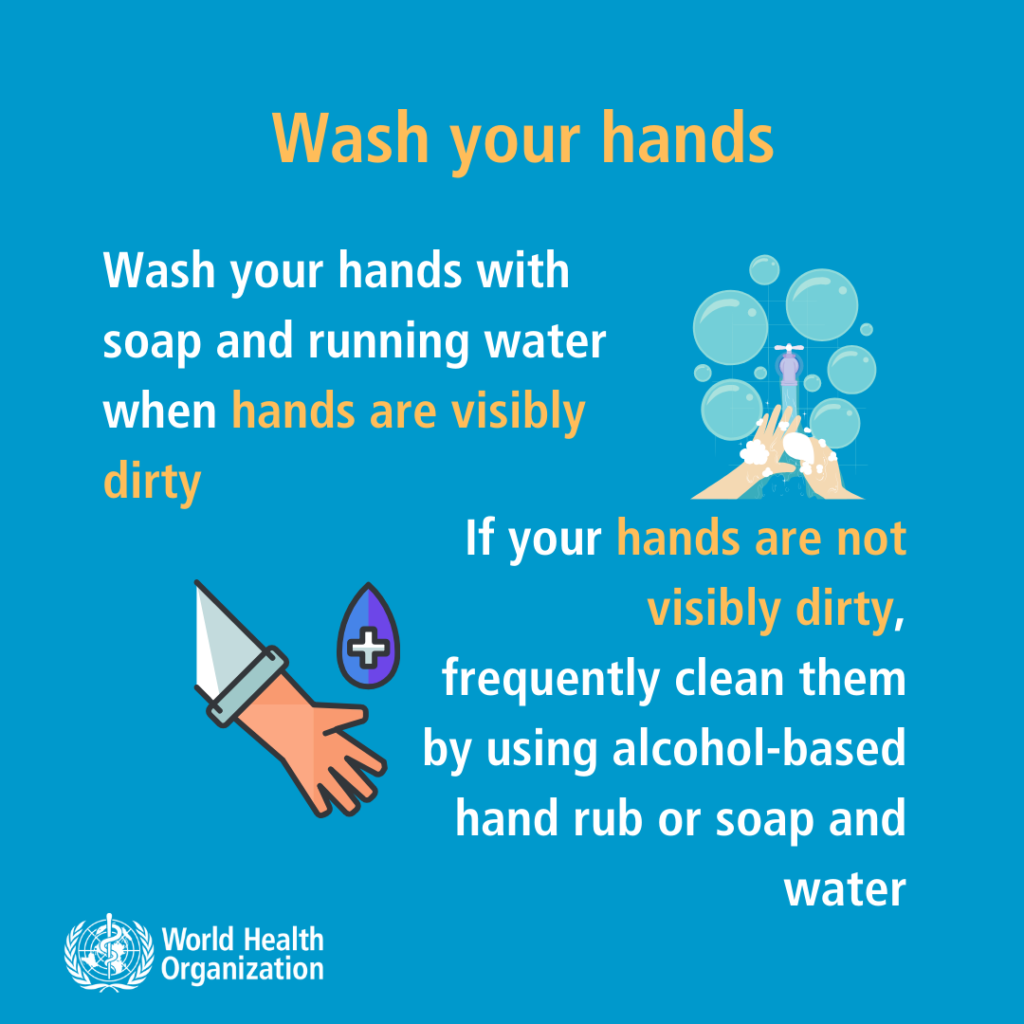
Be alert, but not alarmed.
Coronavirus disease (COVID-19) is here and plans to contain its spread are in place.
As with many viral infections, the severity of any associated illness will vary from person to person dependent on a number of factors including age and the presence of any associated co-morbidities.
Precautions such as frequent handwashing can play an important role in helping to reduce the spread and impact of this new disease.
To reduce your risk the World Health Organisation recommend
1. Wash your hands frequently
Use soap and water or an alcohol (min 70% alcohol) based hand rub. Frequently.
After using the toilet. Before prepping or eating food. After interacting with other people and pets.
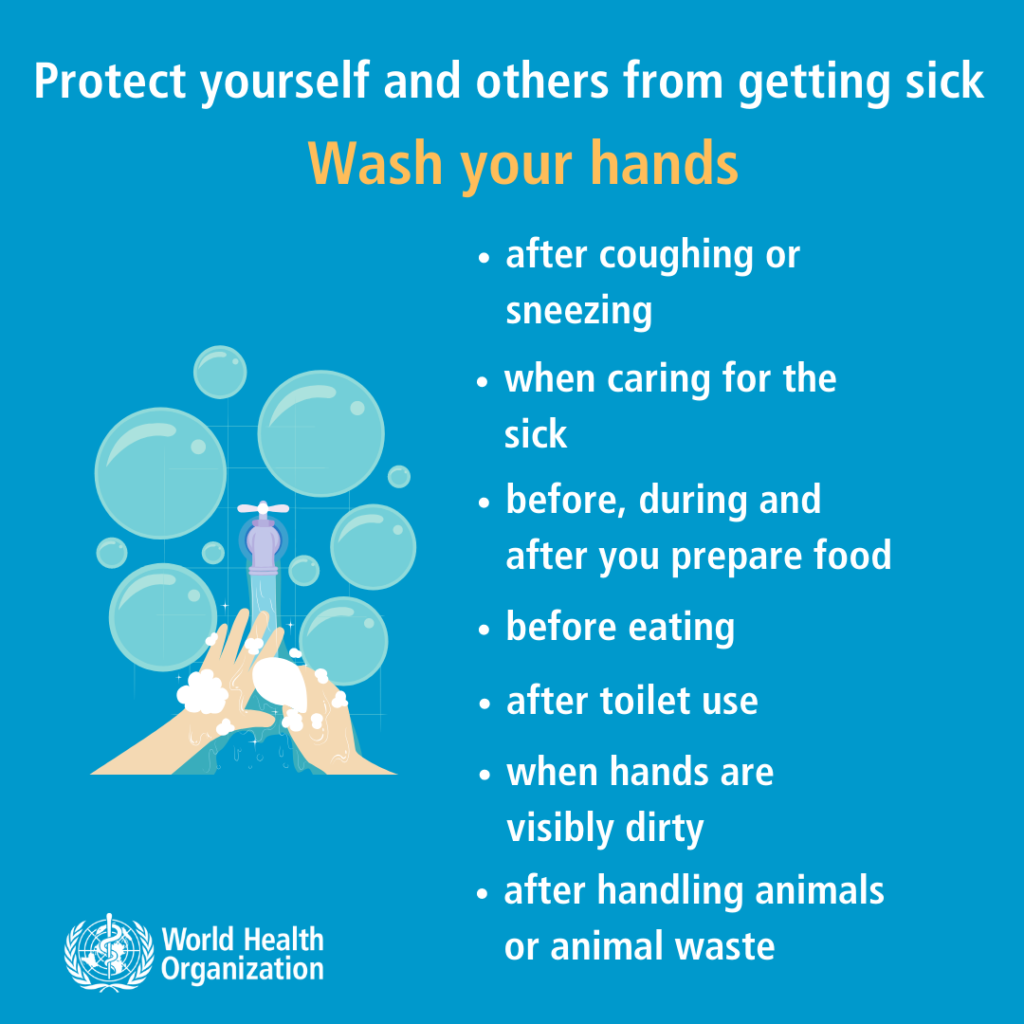
2. Keep your distance
Keep at least one metre (3 feet) away from anyone who is coughing or sneezing to prevent breathing in infected droplets.
According to research from Massachusetts Institute of Technology coughing can spread droplets up to SIX metres and sneezing up to EIGHT metres and the droplets can stay suspended in air for up to 10 minutes.
As the saying goes, “coughs and sneezes spread diseases” so cover your mouth if you are coughing or sneezing and cough into the crook of your arm rather than your hand, dispose of any tissues immediately and wash your hands again.
When meeting people, avoid shaking hands and wet sloppy kisses, even if they’re good friends.
3. Try to reduce touching your face, nose and mouth
This is often done subconsciously – so just try to be aware of reducing how often you do it. Once you’ve noticed you have – this can act as a reminder to practice hand washing again.
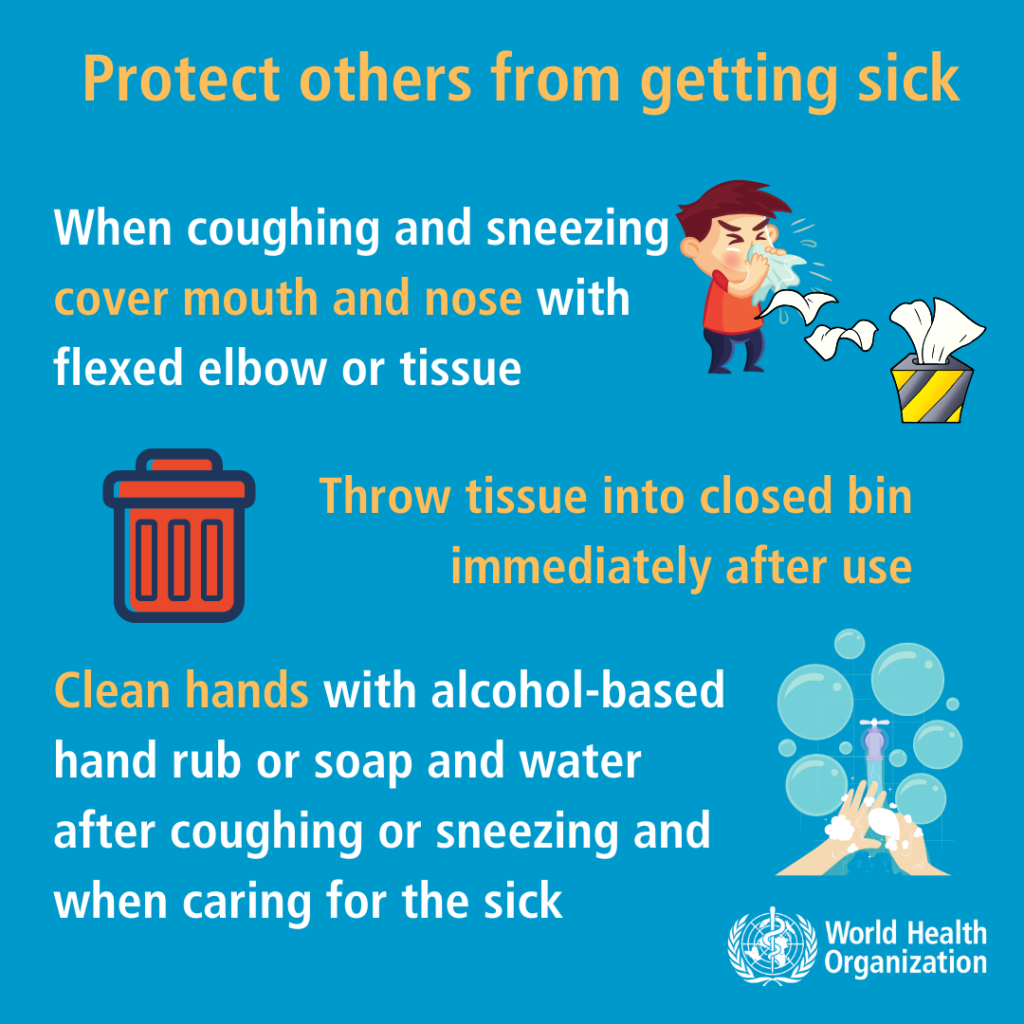
4. Look after yourself
You can boost your natural immunity by ensuring you are eating healthily, staying physically active and getting enough sleep. Get the ‘flu vaccine when available. This won’t protect you from coronavirus but it will help reduce your risk of developing an influenzal illness which could put you at greater risk of COVID-19.
5. If you have a fever, cough and/or difficulty breathing seek medical attention early
It’s time to keep things in perspective.
Face masks and hoarding toilet paper isn’t the answer to minimising our potential risk of contracting coronavirus or any other acute respiratory infection.
Simple hand washing ( with soap) along with good hygiene etiquette ( keep your germs to yourself) works well.
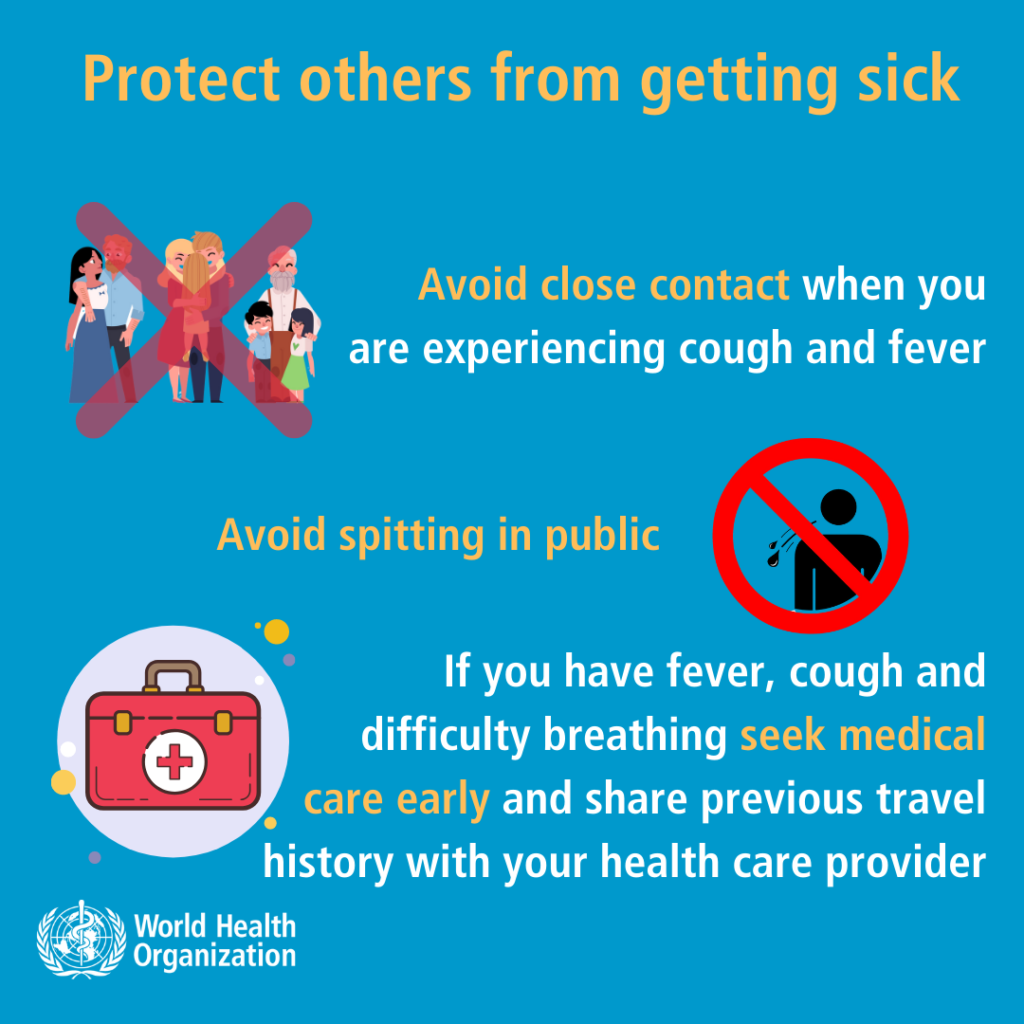
All images sourced from the World Health Organization.
Dr Jenny Brockis is a media stable expert, medical practitioner and board-certified lifestyle physician specialising in brain health, mental wellbeing and human connection.
www.drjennybrockis.com


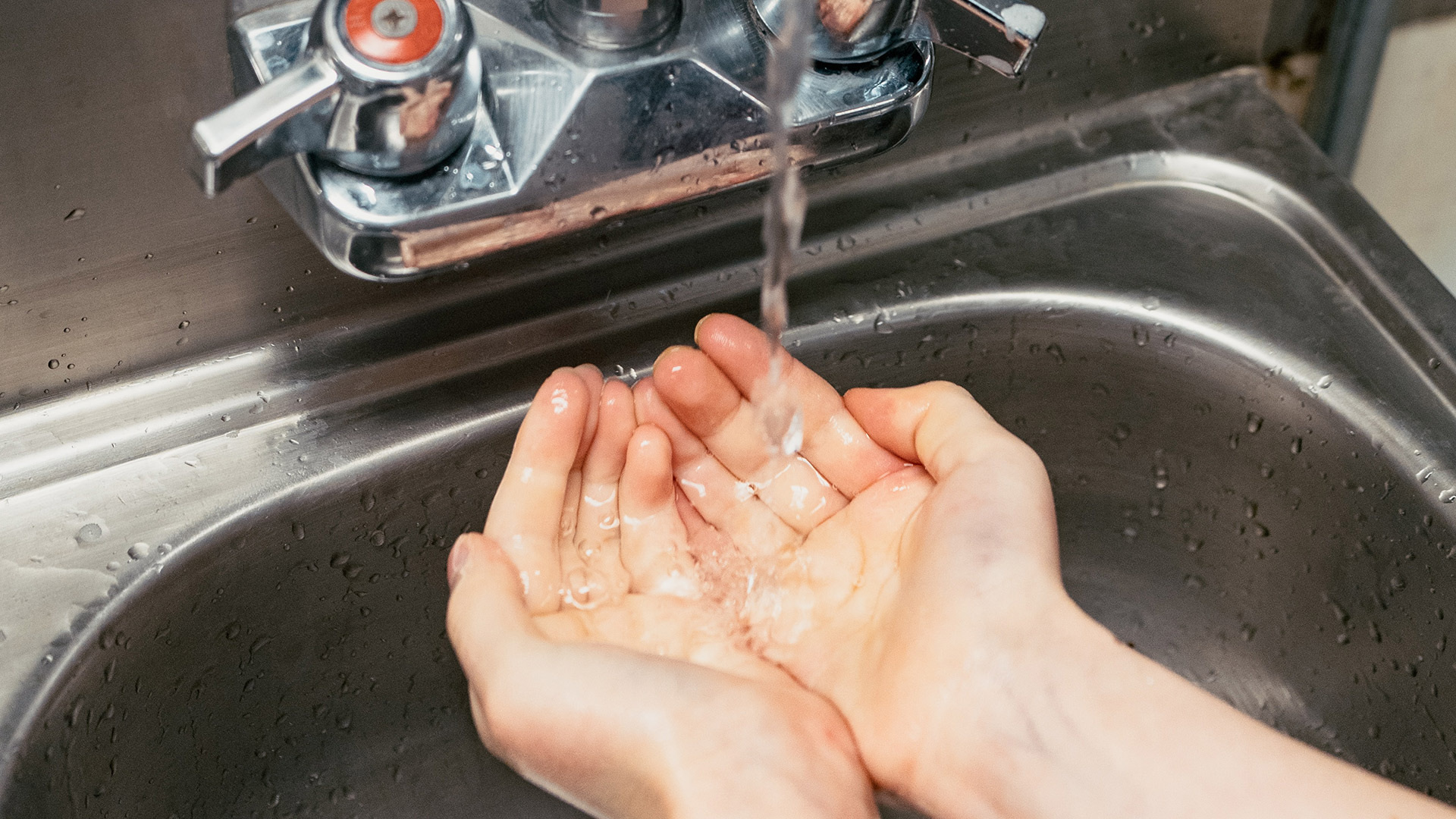
Excellent article Jenny which I have shared! Janni Goss
Mob: 0419 293 469
Thank you for the information on the Coronavirus Jenny. As a Principal of a school you can imagine what we are dealing with in relation to this. The Health Department and Department of Education have been great and from yesterday we are receiving updates three times per week.
Sadly, common sense is very difficult to share with a community. The WHO posters you included in your blog are simple and succinct. I will share these.
We have had hand sanitizers outside toilet doors and beside classroom doors for years now. Soap in school toilets with no warm water access creates horrible problems. So we stick to the sanitizers which are replenished by our cleaners.
My school is about 70% Asian with some still in China, yet to return. The many who did return at the end of their planned Chinese New Year holidays were terrific and understood the need to stay home for a further two weeks. Principals were also given return flight details for all of these students so we could double check. It was really quite an effective process.
Here’s to common sense and staying informed.
Thanks again – I will share.
Hi Bronwyn,
Everything is moving so quickly. Who would have thought that in the space of a few weeks what we knew as our ‘usual’ is now history. As we move into school holidays and a time of increasing social isolation it will be the phase of recovery (whenever that might be) where community and shared new norms will help the most. Stay well